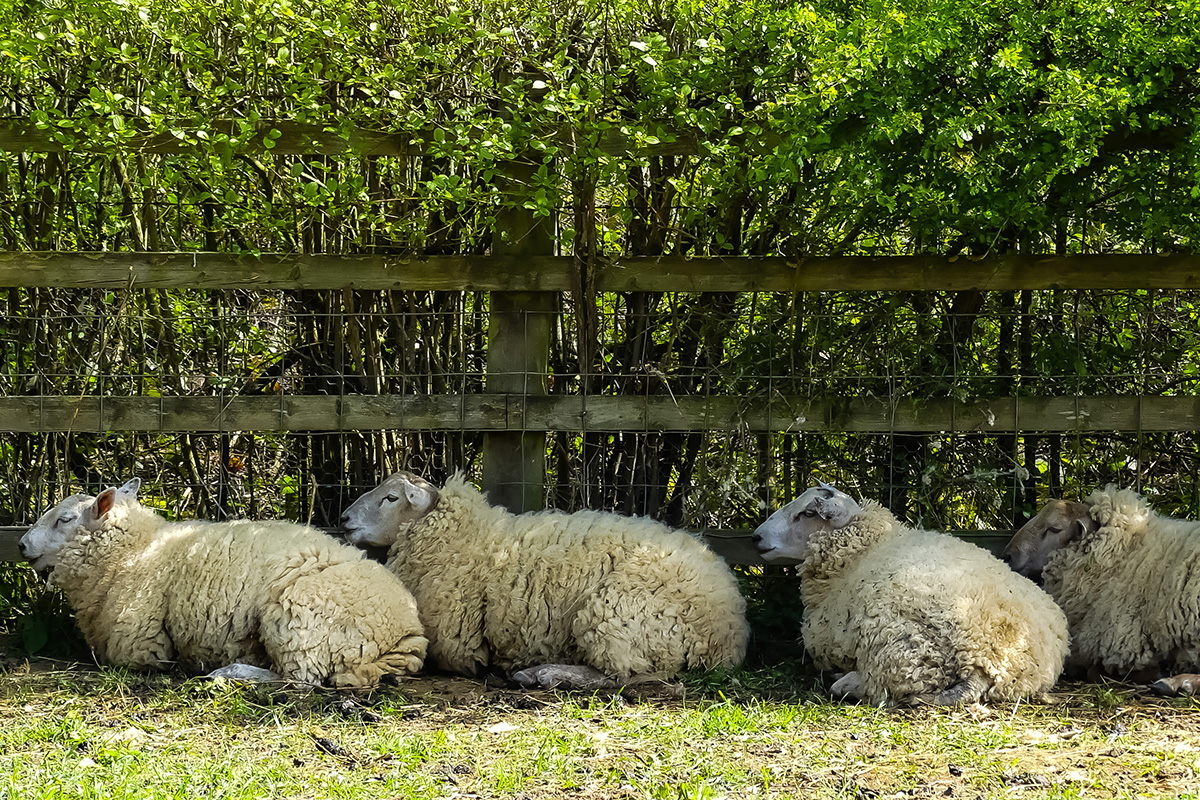
Life on the (h)edge
Hedgerows are the most widespread semi-natural habitat in the UK and an important feature of our Cumbrian countryside, providing an array of benefits for the landscape and the wildlife within it.
Did you know that they support over 2000 species in the UK? They provide corridors for wildlife; helping birds, insects, and mammals move between habitats.
Featuring a wide variety of native tree species, our hedgerows are an important wildlife habitat in their own right, providing year-round food and shelter for creatures large and small. They provide a feast for a whole host of wildlife through nectar-rich flowers, leaves, fruits and berries, and seeds and nuts.
Why we love hedgerows
As well as ensuring wildlife can thrive, hedgerows provide an important buffer for rivers. Plant one across a hill slope and it can help to slow down the flow of surface water and stop excess nutrients from the soil from washing into the river.
It’s a living habitat, so needs water to thrive, soaking up rainfall and surface water through its roots and catching and absorbing the raindrops on its leaves.
Why is this important for rivers? Well, it means that this water is held on the land and in the hedgerow instead of flowing into rivers – useful during heavy rain to help reduce the likelihood of flooding. Soil nutrients remain where they are most needed – on the land, not contributing towards the pollution 0f fragile aquatic ecosystems.
A hedge for each season
There’s always something to see whatever the season. Here is a flavour of changes you can see in our native hedgerows. You can also download our seasonal hedge guide as a PDF
Spring
A time of awakening – pink and white blossom emerging and leaves unravelling; birds chorusing and nesting.
The early flowering species such as Blackthorn, Rowan, and Spindle provide an important source of nectar and pollen, especially valuable for bees. Hawthorn, another early flowerer, is found in most of our hedges in the UK, its early flowers are a feast for dormice*. Early soft birch leaves attract aphids, providing food for ladybirds.
*although there aren’t any populations of dormice recorded in the Eden, there are some to be found in the southern Lake District and Westmorland Dales.
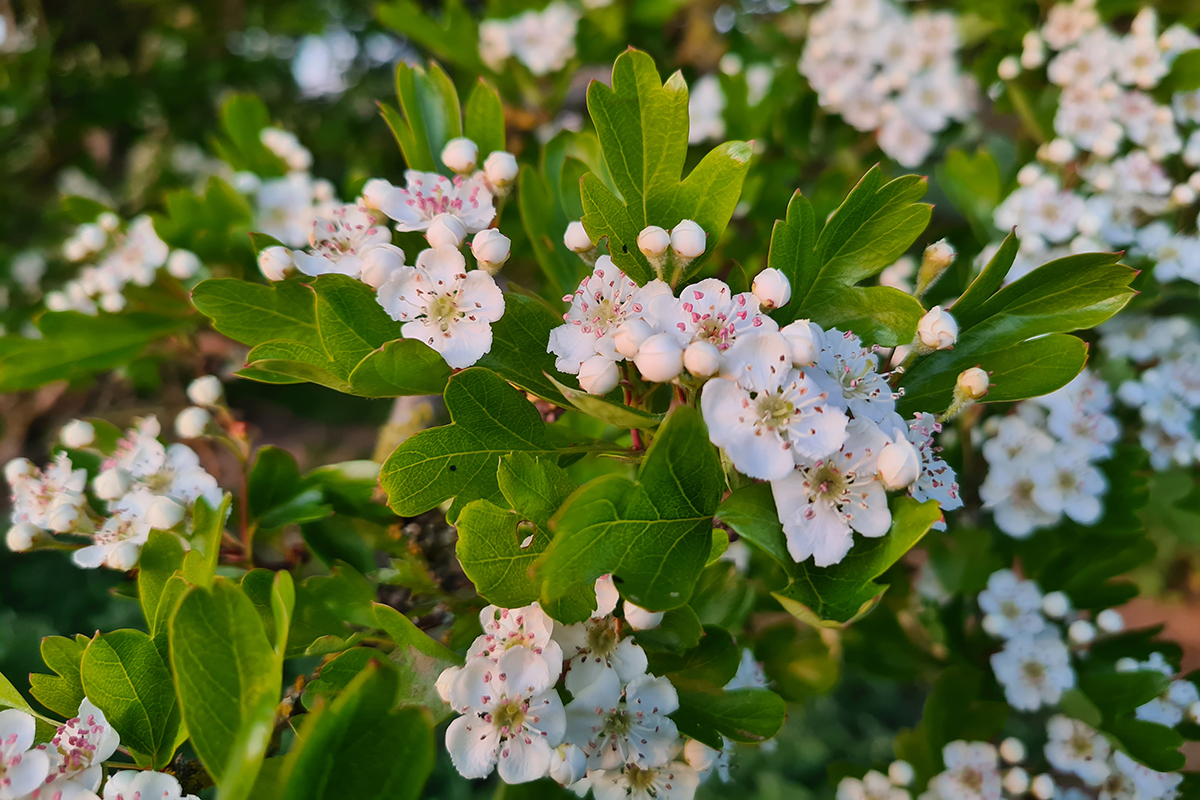
Hawthorn flowers
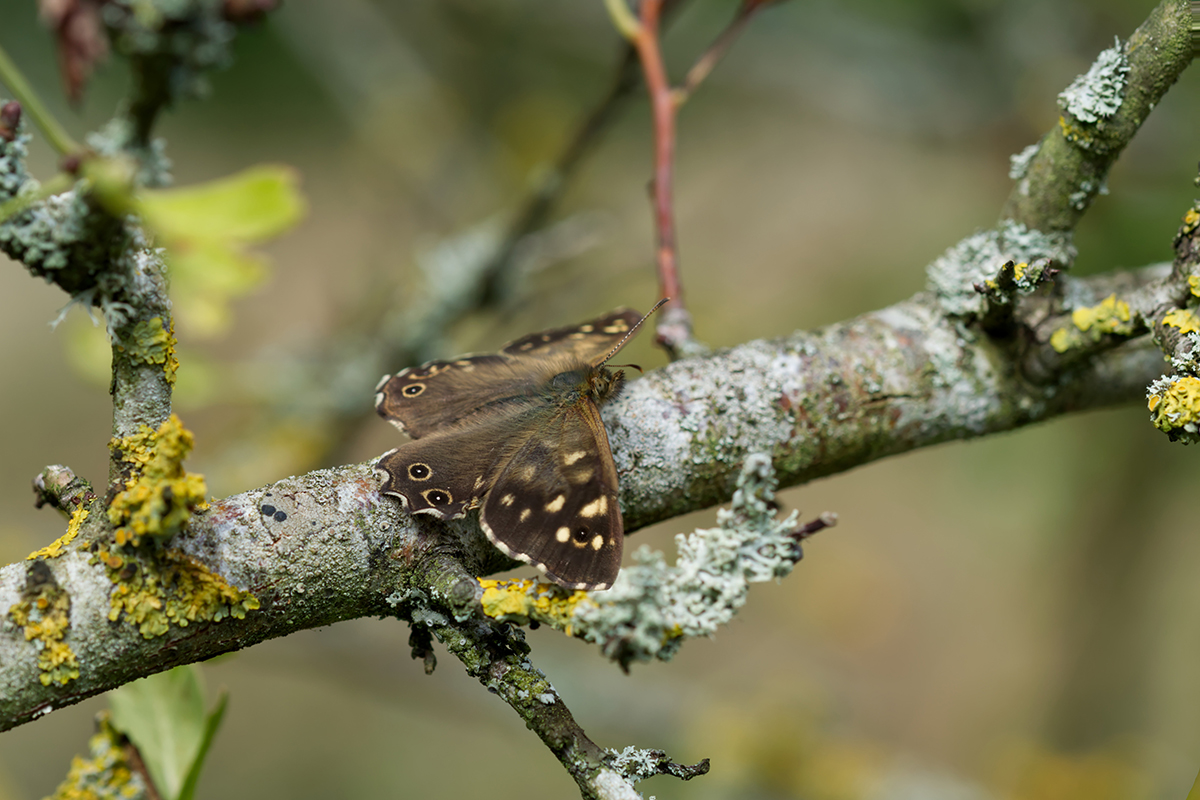
Speckled wood butterfly by Ben Challis
Summer
With the sun high in the sky, hedges are bursting with life and dense greenery, fledglings emerging, mice scuffling in the fields, bees visiting flowers for nectar.
Caterpillars feed on hazel leaves, in turn providing a meal for dormice. The early fruit from cherry sustains birds, including blackbirds and song thrush, as well as mammals such as badger and mice. Spindle leaves are feasted upon by caterpillars of moths. The leaves also attract aphids and their predators, including hoverflies, ladybirds and lacewings, as well as house sparrows and dunnocks.
Autumn
There’s a slight chill in the air, a sign that winter is on its way. Meanwhile, our hedges are a riot of colour – of auburn leaves and crimson berries of all kinds.
They are a hive of activity as birds, insects and mammals gather berries from species including elder, holly, guelder rose, and many more. Woodpeckers, nuthatches, tits, jays and small mammals nibble and peck on hazel nuts. Ivy flowers in autumn provide welcome late nectar and hollow elder stems a shelter for overwintering insects.
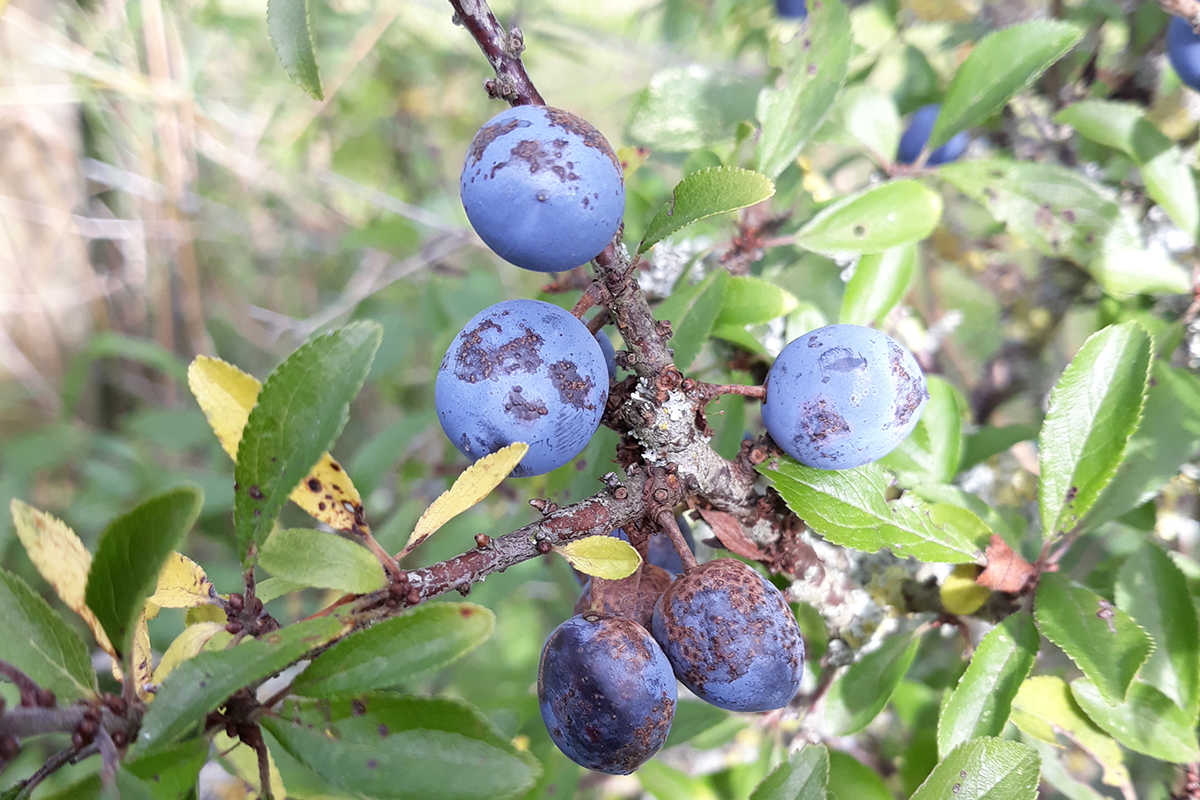
Sloe berries
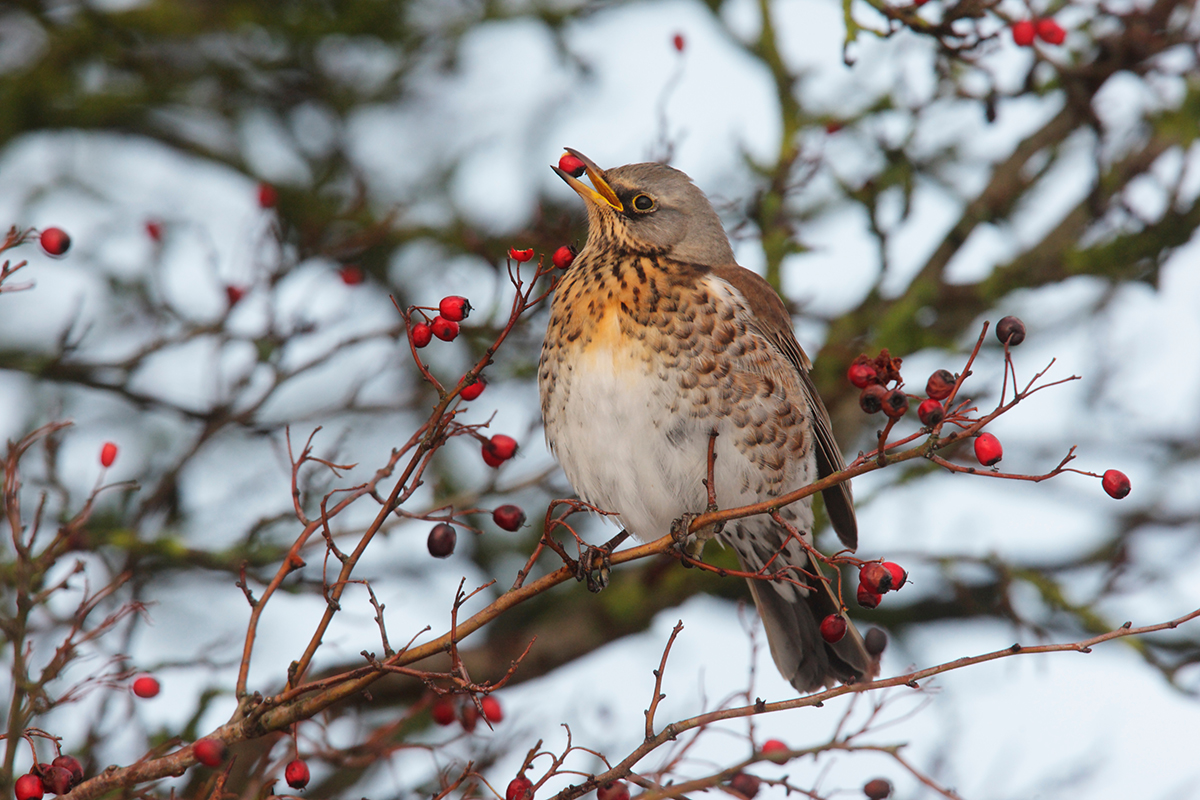
Fieldfare feeding on red hawthorn berries. Photo: Erni/Adobe Stock
Winter
A robin sings, frosty branches glistening, persisting berries ripe for the picking, fresh brown buds ready for spring’s awakening.
During the bleakest months of the year, hedges supply much needed resources for wildlife to survive these challenging months. Birds, searching for a reliable food source throughout the winter, spy the ruby red dog rose hips and crab apple – a favourite with mammals and birds, such as mice, voles, foxes and badgers. Hazel catkins can be spotted in late winter before the leaves appear, and if you are lucky, you might spot the tiny hazel flowers too!
You can help
Hedgerows are a living habitat, in a constant state of progression both seasonally and annually. Through infrequent and late trimming and encouraging their messy quality, you can enjoy hedges for what they are and the life they support.
Let’s encourage the creation and management of healthy hedgerows across our landscape and enjoy what follows.
Here’s five things you can do:
- Make space for nature – create a hedge using native species if you can, see the Woodland Trust website for planting and species information.
- Increase diversity – A greater range of hedgerow plant species will support a greater range of wildlife species. Hedgerows also act as the base of many different food chains, for example, a hawthorn leaf will feed the caterpillar, which is eaten by the blackbird, which is caught by the sparrowhawk. A diverse hedge will provide hundreds of unique food chain pathways. Read Twigged by the Woodland Trust to find out more about the native tree species you can use in your hedge.
- Infrequent and late trimming – Try to cut hedgerows less often (every three years if possible) and later in winter. There will be more flowers and berries to support early spring invertebrates, overwintering birds, moths, small mammals and many more. Avoid cutting all your hedges at the same time to leave a constant food source all year round.
- Know your limits – You should not cut trees or hedges from 1st March to 1st September due to the presence of nesting birds.
- Read our new leaflet about Healthy Hedgerows and find out more about planting and maintaining your hedge.
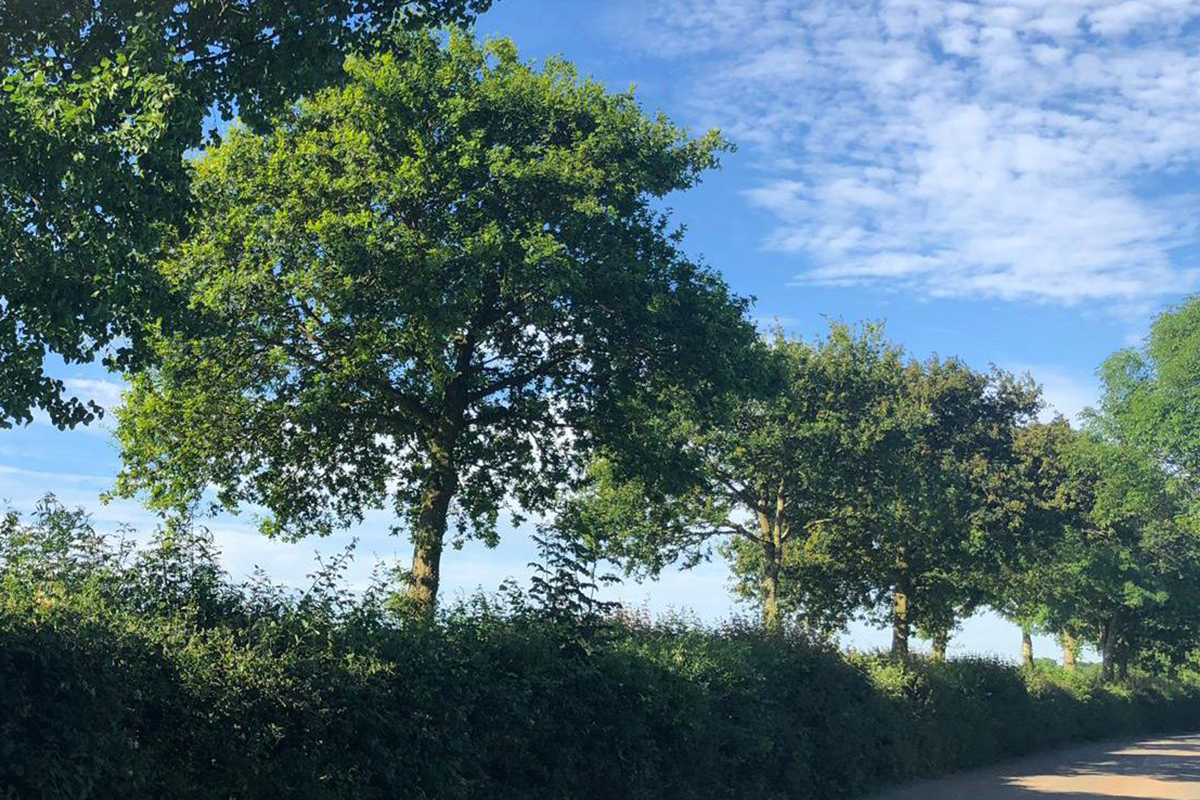
Healthy hedgerow with trees at intervals along it. Photo courtesy of Megan Gimber/PTES